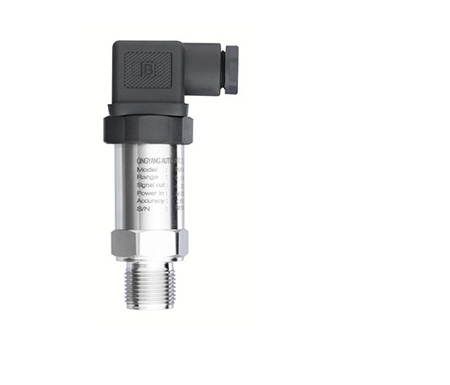How much do you know about the technical specifications of the sensor?
 Apr 14, 2021|
Apr 14, 2021| View:817
View:817Pressure sensortechnical specifications mainly provide users with information about product technology and product functions. Since there are no legal requirements or industry standards to specify the content and form of technical specifications, the technical specifications of each manufacturer are different. When analyzing technical specification data, it is important to understand important details, differences and issues that need attention.
1. Accuracy and accuracy
The terms "precise" and "precise" have different meanings. For measuring sensors, the two must be distinguished correctly.
Accuracy includes linearity error, hysteresis error and repeatability error (or repeat accuracy) within the measurement range. The measured value is more or less always close to the final average value, which can be represented by a "scattered circle". However, accuracy cannot be used to describe the error between the average value of multiple measurements and the true value. Such errors are represented by "precision".
The accuracy is represented by a scattered circle centered on the average value. "Accuracy" refers to the error between the average value of multiple measurements and the true value.
2. Maximum measurement error and separate standard measurement errorDifferent suppliers have different definitions of sensor specifications. Some suppliers provide the largest measurement error, while others provide a separate standard measurement error. However, these two variables are completely different.
The standard measurement error is represented by the radius (precision) of the scatter circle, and the maximum measurement error is the sum of the fixed error (precision) and the standard measurement error (precision).

Due to the different general specifications implemented, the performance of two sensors with the same parameter values may be very different. If both sensors are marked with 0.1% full scale (FS), there is no fixed error for one of them. In addition, the relationship between the measured value and the true value is not indicated. Therefore, a sensor with a standard measurement error of 0.1% FS is likely to correspond to a sensor with a maximum measurement error of 0.5% FS. In order to make the maximum measurement error reach 0.1% FS, the sensor must be more precise, for example: 0.05% FS standard measurement error (accuracy, dispersion circle) plus 0.05% FS fixed error. to
If the data sheet does not clearly indicate whether it is the maximum measurement error or the standard measurement error, it must be explained in small fonts to distinguish. The key to the question is whether the technical indicators include zero point error and full scale error. E.g:
The technical specifications specified according to the standard measurement error include linearity error (set according to the minimum BFSL) and hysteresis error and repeatability error; the technical specification specified according to the maximum measurement error includes zero point error, full scale error, linear error (set limit Point setting) and hysteresis error and repeatability error (EN 61298-2).
3. Error definition
Whether it is the standard measurement error or the maximum measurement error, the definition of error must be further considered. There are two common ways to define errors. to
A large number of sensors are used in the measurement process, and each sensor performs corresponding multiple measurements. If defined as a "typical" error, only 68% (1s) of sensors meet the technical specifications. This means that 32% of the sensors do not meet the technical specifications provided by the manufacturer.
If defined by the "maximum" error, it is a high-quality product, because from a statistical point of view, 99.7% (3s) of measuring sensors meet this technical specification. Therefore, in this case, almost all sensors meet the manufacturer's technical specifications.
4. Temperature influence
The standard measurement error and/or the maximum measurement error are related to the reference temperature, which is usually 20°C. However, in most cases, the operating temperature of the sensor is unstable or deviates from 20°C, which will have a corresponding impact on the standard measurement error, but has a greater impact on the maximum measurement error. This is because the performance of the sensor can only be adjusted for one temperature value. Therefore, in the case of temperature changes, both zero point error and full scale error (limit point or minimum setting) will change.










View More(Total0)Comment lists